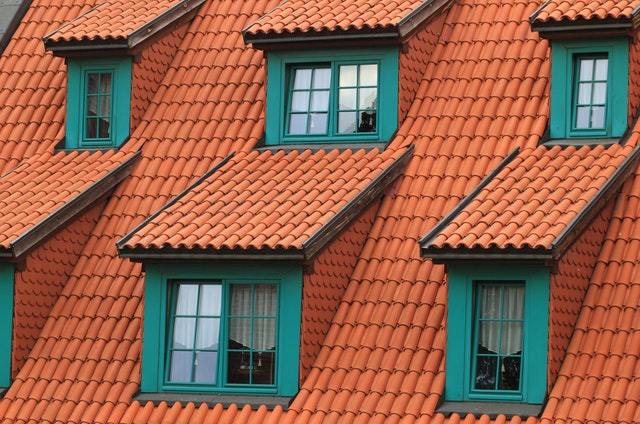
Roofing your house is not exactly the most exciting home project you can take on, and very few people can argue with that.
Still, when your house shows signs of leakage or the roof begins to look like it would use some maintenance, you don’t have a choice but to start considering a much-needed replacement.
A new roof can improve the appearance of your home and increase its value. So, if you plan on selling your house, this is an improvement worth doing.
At the same time, replacing your roof will restore the sense of safety you should be experiencing while at home.
When it comes to installing a new roof, there are many types of materials to choose from, each with its advantages, disadvantages, and methods of installation. Do your due diligence and research thoroughly before choosing a roofing material, as a big project like this is quite costly. The last thing you want to do is a new replacement shortly after.
To help you out, we will be discussing various methods of roof installation based on the type of material used. Keep in mind that the materials we will be talking about are not the only options available, but rather the most popular. So, don’t limit your research to these ones only.
Roof Installation Guide
Asphalt Shingles

Image credit: eawroofing.com
This is perhaps the most traditional roofing material in North America. It is durable, quite affordable, and available in a variety of colors.
One great advantage of asphalt shingles is that if you want to make a change later on, you can cover the layer of shingles with new ones without having to replace them.
To fasten the asphalt shingles, you need to use roofing nails and drive them through the tabs immediately below the sealant line and space them according to the manufacturer’s instructions.
When shingling a roof, start at the edge with what is called a starter strip, which can be created by cutting off the tabs (about 6 inches) on the first shingle. Then, continue applying full-length starter shingles along the eaves.
Once the starter strip is complete, move to the second course and work your way up the roof, nailing every shingle in place. Make sure to nail the first shingle of every course about 6 inches narrower than the shingle beneath.
Metal Roofing
The reason why metal roofing is so popular amongst homeowners is that it can last a lifetime if properly installed. There are many options for metal roofing, including tiles, shingles, standing-seam panels, and shakes, all coming in a wide variety of colors to suit every house. And because it is lightweight, it can be installed over an existing roof, cutting the installation time quite significantly.
If some types of roofing can be DIYd, metal roofing is better left to the professionals as it needs lots of tools, special accessories, and particular techniques to ensure a proper new roof installation.
Typically, there are two ways you can install metal roofing; either using a through-fastener system or clip-fastener system.
The first option involves a system in which the nail or screw that secures the roofing to the deck penetrates the panel itself. In the second option, the panels or shingles are attached with specialized clips, then the fasteners are driven through the clips instead of the actual metal roofing.
Cedar Shingles

Image credit: southern-timber.co.uk
Cedar shingles provide a classic look to any house, and the material makes for a strong and resistant roof with high insulation value. Plus, it’s made out of renewable material, which means you also give something back to the environment as well.
Cedar shingles are installed one at a time, usually in straight single courses.
Two nails are typically used to fasten the shingles each spaced at about one inch from the edges. To ensure maximum protection and insulation, shingles must be doubled or tripled at all eaves, with first-course shingles projecting 1-1/2 inches past the fascia.
Spacing between joints should be at a minimum of ¼ inches and joints in any course should be separated by at least ½ inches from joints in adjacent courses.
For more information, make sure to consult the manufacturer’s guidelines before installation and check for specific instructions.
Slate

Image credit: hinkleroofing.com
Slate system roofs usually cost more upfront than your traditional asphalt shingles, but they are an investment that will pay off in time because synthetic slates are much more durable and look much better.
The process of installing a slate system roof is much slower, and you have to be more careful when managing the material. This is why it is recommended to contact a professional company for a new roof installation.
To ensure proper installation, aluminum W flashing is installed on each side of the dormer. Aluminum is then bent in a V, and shingle caps are nailed all over it.
Some slate roofs require snow guards as well, to ensure that snow won’t be sliding off the roof and cause accidents. The reason why this is necessary is that unlike other materials such as asphalt, slate shingles are not porous and snow won’t be retained on the roof.
Clay and Concrete

Clay roof tiles are very popular for their Mediterranean aspect they can give to any unique home. They are also very durable despite being lightweight, which makes them appropriate for homes that don’t support a heavy roof.
Before installation, you have to make sure the surface is leveled to ensure an even roof. Under the shingles, an underlay, usually made out of asphalt-saturated materials, is placed to ensure that the tiles will be installed properly. After the underlay, a metal flashing is installed around the chimneys; vents are wherever the roof meets a vertical wall.
Tiles are installed using a 10d nail that is positioned at the base of the clay tile and into the batten. Add mortar under the first tile to ensure stability.
Install another tile at the other end of the row and then work your way to the middle from each side.






Leave a comment
This site is protected by hCaptcha and the hCaptcha Privacy Policy and Terms of Service apply.